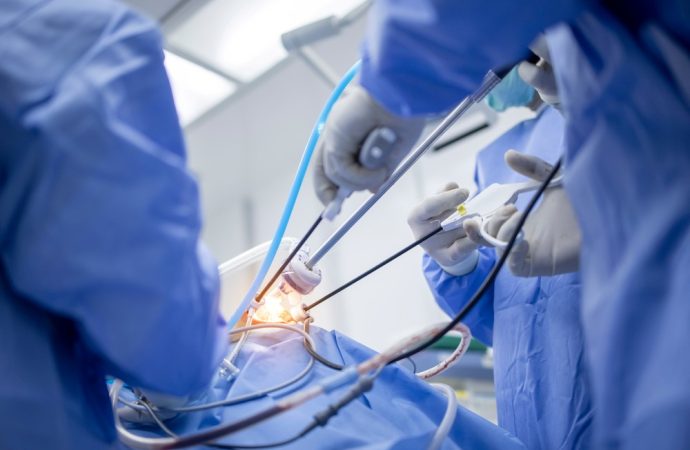In the evolving landscape of modern medicine, surgical innovations have revolutionized the way we approach and treat various medical conditions. One of the most significant advancements in recent decades is the development and refinement of minimally invasive procedures. These techniques have transformed surgical practice, offering numerous benefits over traditional open surgeries. This article delves into
In the evolving landscape of modern medicine, surgical innovations have revolutionized the way we approach and treat various medical conditions. One of the most significant advancements in recent decades is the development and refinement of minimally invasive procedures. These techniques have transformed surgical practice, offering numerous benefits over traditional open surgeries. This article delves into the world of minimally invasive procedures, highlighting their advantages, the technologies driving these innovations, and their impact on patient care.
The Rise of Minimally Invasive Surgery
Minimally invasive surgery (MIS) refers to surgical techniques that limit the size and number of incisions needed to perform an operation. This approach contrasts with traditional open surgery, which typically involves larger incisions to access the target area. The concept of MIS is not entirely new, but its widespread adoption and continuous improvement are relatively recent phenomena.
Benefits of Minimally Invasive Procedures
- Reduced Recovery Time: One of the most significant advantages of MIS is the shorter recovery period. Smaller incisions mean less trauma to the body, leading to quicker healing and a faster return to daily activities.
- Less Pain and Scarring: Patients undergoing minimally invasive procedures generally experience less postoperative pain and minimal scarring compared to those who have traditional open surgery.
- Lower Risk of Complications: The smaller incisions used in MIS reduce the risk of infection and other complications, such as hernias, that can result from larger surgical wounds.
- Shorter Hospital Stays: Many minimally invasive procedures can be performed on an outpatient basis or with a significantly reduced hospital stay, which can lower healthcare costs and reduce the burden on medical facilities.

Picture by: Yandex.com
Key Technologies Driving Surgical Innovations
The success and proliferation of minimally invasive procedures are largely due to advancements in medical technology. Several key innovations have played pivotal roles in this transformation.
Laparoscopy
Laparoscopy is one of the earliest and most widely used minimally invasive techniques. It involves the use of a laparoscope, a thin, flexible tube equipped with a camera and light source, which allows surgeons to view the inside of the abdomen and pelvis without making large incisions. Specialized instruments are inserted through small incisions to perform the surgery. Laparoscopy is commonly used for procedures such as gallbladder removal, appendectomy, and hernia repair.
Robotic-Assisted Surgery
Robotic-assisted surgery represents a significant leap forward in surgical precision and control. The most well-known system, the da Vinci Surgical System, allows surgeons to control robotic arms equipped with surgical instruments from a console. This technology provides enhanced dexterity, greater range of motion, and improved visualization through high-definition, 3D imaging. Robotic-assisted surgery is used in various fields, including urology, gynecology, and cardiothoracic surgery.
Endoscopy
Endoscopy involves the use of an endoscope, a flexible tube with a camera and light, to examine the interior of a hollow organ or cavity. Unlike laparoscopy, which is primarily used for abdominal and pelvic procedures, endoscopy can be applied to various parts of the body, including the gastrointestinal tract, respiratory system, and urinary tract. Endoscopic procedures are often used for diagnostic purposes, such as biopsies, and for therapeutic interventions, such as removing polyps or treating bleeding.
Natural Orifice Translumenal Endoscopic Surgery (NOTES)
NOTES is an emerging technique that takes minimally invasive surgery to the next level by accessing internal organs through natural orifices, such as the mouth, anus, or vagina, rather than through external incisions. This approach aims to eliminate visible scarring and further reduce postoperative pain and recovery time. While still in its early stages, NOTES holds great promise for the future of minimally invasive surgery.
Image-Guided Surgery
Advancements in imaging technology have significantly enhanced the precision and safety of minimally invasive procedures. Techniques such as fluoroscopy, ultrasound, and MRI-guided surgery allow surgeons to visualize the surgical field in real-time, navigate complex anatomy, and accurately target diseased tissue while sparing healthy structures. These imaging modalities are particularly valuable in neurosurgery, orthopedic surgery, and interventional radiology.
Impact on Patient Care
The advent of minimally invasive procedures has had a profound impact on patient care, improving outcomes and enhancing the overall patient experience.
Improved Quality of Life
Patients who undergo minimally invasive surgery often report a higher quality of life postoperatively. The reduced pain, shorter recovery time, and minimal scarring associated with these procedures allow patients to resume their normal activities more quickly and with less discomfort.
Enhanced Surgical Precision
The advanced technologies used in minimally invasive procedures, such as robotic-assisted surgery and image-guided techniques, enable surgeons to perform complex operations with greater precision and control. This precision translates to better surgical outcomes, reduced risk of complications, and improved long-term results.
Greater Access to Surgery
Minimally invasive techniques have expanded the range of patients who can safely undergo surgery. For example, elderly patients or those with comorbidities who may not be candidates for traditional open surgery can often benefit from the less invasive nature of MIS. This increased accessibility allows more patients to receive the surgical interventions they need.
Cost-Effectiveness
While the initial investment in advanced surgical technologies can be high, minimally invasive procedures often prove to be cost-effective in the long run. Shorter hospital stays, reduced need for postoperative pain management, and quicker return to work contribute to overall cost savings for both patients and healthcare systems.
Challenges and Future Directions
Despite the numerous advantages of minimally invasive procedures, several challenges remain. The high cost of advanced surgical equipment and the need for specialized training can limit the widespread adoption of these techniques. Additionally, not all surgical procedures are suitable for a minimally invasive approach, and some patients may still require traditional open surgery.
Looking ahead, ongoing research and development in the field of surgical innovations are likely to yield even more advanced and refined minimally invasive techniques. The integration of artificial intelligence, machine learning, and augmented reality into surgical practice holds great potential for further enhancing precision, safety, and outcomes.
Conclusion
Minimally invasive procedures represent a remarkable leap forward in the field of surgical innovations. The benefits of reduced recovery time, less pain, lower risk of complications, and shorter hospital stays have made these techniques increasingly popular among both patients and surgeons. Driven by advancements in technology, such as laparoscopy, robotic-assisted surgery, and image-guided techniques, minimally invasive procedures continue to transform patient care and improve surgical outcomes. As research and development in this field progress, the future of surgery promises to be even more precise, safe, and effective, ultimately benefiting patients worldwide.
















